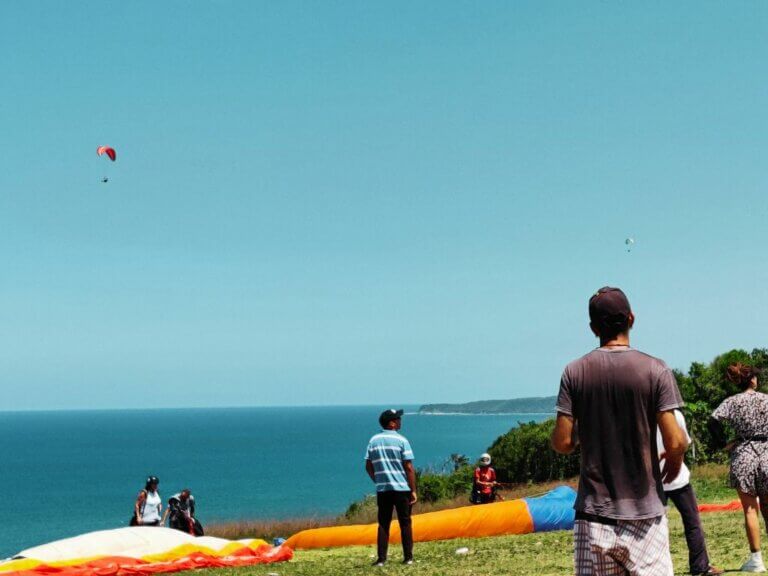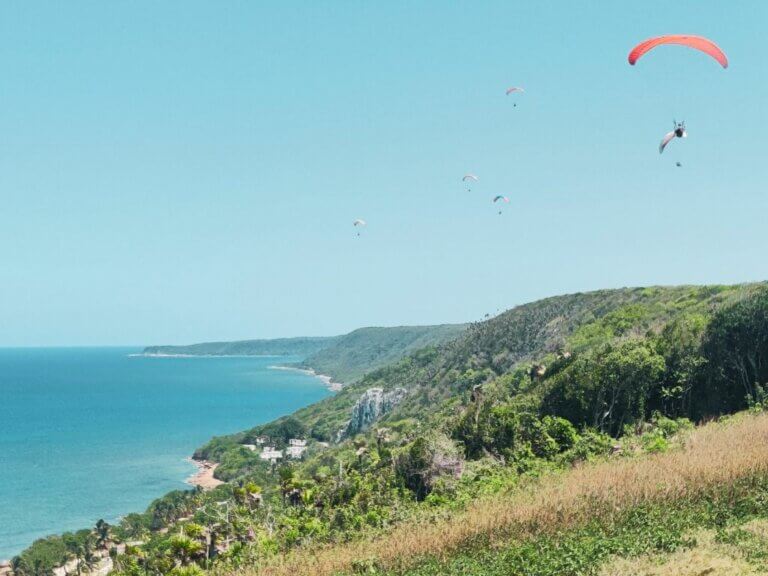Cuba, with its vibrant culture, breathtaking landscapes, and tropical climate, has long been a popular tourist destination. However, beyond its pristine beaches and historic cities, this Caribbean island offers a hidden gem for adventure seekers. Imagine soaring through the sky, feeling the wind rush against your face as you take in the stunning views of the turquoise waters, lush green mountains and vibrant cities.
In this article, we will delve into the world of paragliding in Cuba, exploring the best locations, the exhilarating experiences on offer, and the essential information you need to embark on this thrilling adventure.
Top Places for Paragliding in Cuba
Cuba, with its diverse landscapes and stunning natural beauty, offers several fantastic locations for paragliding enthusiasts. Here are some of the best places for paragliding in Cuba:
1. Viñales Valley
Located in the western part of Cuba, Viñales Valley is a UNESCO World Heritage site renowned for its picturesque tobacco fields, limestone hills known as mogotes, and vibrant rural landscapes. Paragliding in Viñales allows you to soar above the valley, providing breathtaking views of the lush greenery and unique geological formations.
2. Sierra Maestra & Santiago de Cuba
Situated in the southeastern part of Cuba, the Sierra Maestra mountain range and Santiago de Cuba offers a thrilling paragliding experience. Soaring above the rugged peaks and dense forests, you'll be treated to awe-inspiring panoramas of untouched wilderness.
The challenging terrain and the exhilarating flights make Sierra Maestra a favorite spot for experienced paragliders.
3. Varadero
Famous for its stunning beaches and crystal-clear waters, Varadero is a popular tourist destination. Paragliding in Varadero allows you to combine the thrill of flight with the beauty of the Caribbean Sea. Soar above the turquoise waters and enjoy the breathtaking coastal views as you experience the thrill of paragliding.


4. Trinidad
Trinidad, a UNESCO World Heritage site, is known for its colonial charm and vibrant streets. The nearby Escambray Mountains provide a stunning backdrop for paragliding adventures. Take off from the mountain slopes and enjoy panoramic views of Trinidad, the Caribbean Sea, and the lush surrounding landscapes.
5. Ciénaga de Zapata National Park
Located in the Matanzas Province, Ciénaga de Zapata National Park is a vast wetland reserve with diverse ecosystems and abundant wildlife. Paragliding here offers a unique experience as you glide over marshes, forests, and coastal areas, observing the park's rich biodiversity from the air.
6. Baracoa
Nestled on the northeastern coast of Cuba, Baracoa is known for its lush rainforests, pristine beaches, and charming colonial architecture. Paragliding in Baracoa allows you to take in the beauty of this tropical paradise from a bird's-eye view. Soar above the coconut palms, mountains, and azure waters, and enjoy the stunning scenery.
The Paragliding Experience in Cuba
Paragliding in Cuba offers a unique blend of adrenaline-pumping adventure and awe-inspiring natural beauty. Whether you are an experienced paraglider or a novice looking for your first tandem flight, there are options to suit everyone's preferences.
It's important to note that paragliding activities may vary depending on local regulations, weather conditions, and the availability of certified instructors. Always consult with Cubanture to ensure a safe and enjoyable experience. We can provide up-to-date information on the best locations and help you plan your paragliding adventure in Cuba.
Tandem Flights
For beginners or those seeking a more relaxed experience, tandem flights are the ideal choice. Accompanied by a certified instructor, you'll enjoy the freedom of flight while your expert pilot takes care of navigation and safety. Tandem flights are available at various locations across the island, allowing you to choose the backdrop that entices you the most.

Paragliding Courses
If you're looking to take your paragliding skills to new heights, Cuba offers a range of courses for different skill levels. Qualified instructors will guide you through theoretical and practical training sessions, helping you gain confidence and proficiency in the sport. These courses are typically held in scenic locations, allowing you to appreciate the stunning Cuban landscapes as you learn.
Safety Measures
Safety is paramount when engaging in any adventure sport, and paragliding is no exception. Before embarking on your flight, ensure that the paragliding school or instructor you choose adheres to strict safety protocols. Check that the equipment is well-maintained, and instructors are certified and experienced. It's also essential to listen carefully to the pre-flight instructions and follow all safety guidelines to ensure a safe and enjoyable experience.
Practical Considerations and Tips
Weather Conditions
Paragliding is weather-dependent, and it's crucial to choose the right conditions for your flight. Consult with local instructors or schools who have knowledge of the region's weather patterns to select the best time of year and time of day for paragliding. Calm winds and clear skies are generally preferable for a smooth and enjoyable flight.
Equipment Rental
If you don't have your paragliding gear, don't worry. Paragliding providers in Cuba provide equipment rental services. However, it's essential to verify the quality and condition of the equipment before renting.
Photography and Videography
Capture the memories of your paragliding adventure by bringing a GoPro or a camera with a secure strap. Always ensure that any devices you carry are securely attached to your body to prevent accidental drops during the flight.

Gears and equipment
When it comes to paragliding in Cuba, having the right gear and equipment is crucial for your safety and enjoyment. Here are the essential gears and equipment you will need:
It's important to note that paragliding equipment should be regularly inspected, maintained, and certified by professionals to ensure optimal performance and safety.
When visiting Cuba for paragliding, if you don't have your own gear, you can inquire with local paragliding schools or tour operators about equipment rental options. They will be able to provide you with properly maintained and certified gear for your paragliding adventure.
Frequently asked questions
No prior experience is required to go paragliding in Cuba. There are options available for beginners, including tandem flights with certified instructors who handle the flying while you enjoy the experience. There are also paragliding courses available for those looking to learn and progress in the sport.
The best time for paragliding in Cuba is generally during the dry season, which spans from November to April. During this period, you can expect more stable weather conditions with lighter winds.
It's recommended to wear comfortable, weather-appropriate clothing that allows for freedom of movement. Wear sturdy, closed-toe shoes for takeoff and landing, and consider bringing sunglasses and sunscreen for protection against the sun's rays.
Conclusion
Paragliding in Cuba offers a thrilling and unique adventure, allowing you to explore the island's beauty from a bird's-eye view. Whether you're a seasoned paraglider or a beginner seeking an unforgettable experience, Cuba's diverse landscapes provide the perfect setting for soaring through the skies. From the picturesque Viñales Valley to the stunning coastal views of Varadero, there are paragliding options to suit every taste. So, next time you visit Cuba, consider adding paragliding to your itinerary, and prepare for an unforgettable journey where the thrill of flight meets the beauty of the Caribbean.
This might also be interesting for you
Kuba per Fahrrad: Playa Jibacoa mit Pannen und Karibikfeeling
Oh mein Gott, wo kommt nur dieser krasse Gegenwind her?!...
Read moreMTB auf dem Tafelberg – meine erste Mountainbiketour in Kuba
Mist – ein riesiges Schlagloch! Ich schaffe es auszuweichen, doch...
Read moreClimbing off the beaten track in Cuba - camping at the climbing rock of Jaruco
Vor mir sehe ich eine matschfreie Weggabelung. Endlich! Der Schweiß...
Read more

